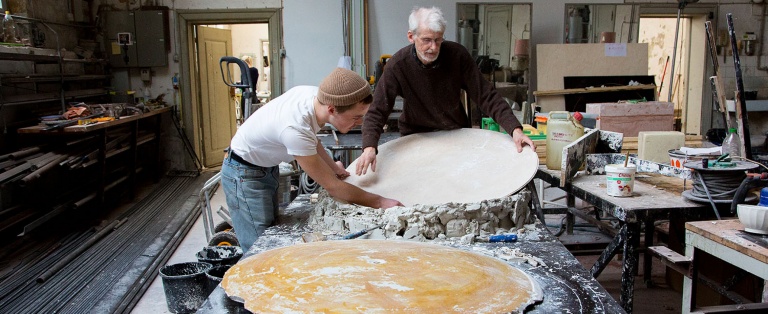The various laboratories contain the workshop facilities and equipment relevant to their particular specialist fields and are manned by associate professors specializing in the relevant disciplines. Students are supported in their efforts to give form and expression to their artistic intentions, taking responsibility for their own learning while maintaining an ongoing dialogue with the head of the relevant laboratory.
The objective is for students to become familiar with a range of materials and their importance to artistic practice. The teaching offered at the laboratories is based on each student’s artistic process, giving rise to a range of technical solutions, explorations and the production of art while contributing to overall professional and educational growth. The Schools and laboratories co-operate on an ongoing basis, and the laboratories also collaborate with art academies, cultural institutions and other stakeholders from Denmark and abroad.
As you will see below, the laboratories are divided into three categories: Sculpture, Print and Painting, and Media, each of which brings together a range of laboratories engaged in similar fields of arts. Students from any of the academy’s programmes (the BFA programme, MFA programme, and the Institute for Art, Writing and Research) may work in the laboratories.
Laboratory for Sculpture
Laboratory for Ceramics
Laboratory for Construction
Laboratory for Wood
Laboratory for Plaster
Laboratory for 3D
Laboratory for Print and Painting
Laboratories for Etching, Engraving
and Lithography
Laboratory for Serigraphy and Risography
Laboratory for Painting and Colour
Laboratory for Media
Laboratory for Photography
Laboratory for Video
Laboratory for Sound
The laboratories through history: Studying materials and generating knowledge
The blossoming of the Arts and Crafts movement in Denmark around the dawn of the twentieth century also ushered in a renewed interest in artistic disciplines associated with crafts. The Academy introduced classes on fresco painting and mosaics; disciplines that would eventually get their own school. Greater emphasis was placed on materials and how to use them – for example by setting up a class on painting technique headed by a colour and pigment technician who conducted lectures as well as laboratory experiments. From 1929, the new laboratory for colour technique also taught ceramic techniques. The School of Sculpture engaged in a similar renewed emphasis on teaching craftsmanship: stonemasons, bronze founders and metal chasers were brought in to teach students, and new classes were introduced, including ones on metal casting, on building stands and scaffolding, and on surface treatments. In 1921 the School of Graphic Art was set up under the auspices of the School of Painting, and it was decided that the academy would now also teach calligraphy and the fundamental principles of bookbinding.
In recent years (from the 1980s onwards) the academy began a transformation: it was now increasingly seen as an institution that generates knowledge and insight. This process also impacted the workshops, which became known as laboratories. The heads of the workshops were assigned new knowledge-based obligations as associate professors: in addition to managing and supervising their laboratories, they now also had an obligation to conduct research within their own field and their own artistic practice. This set-up still remains in place today: most of the associate professors at the laboratories are contractually obliged to devote 20% of their time to research. They submit annual reports on their research to the Institute for Art, Writing and Research.
Read more about the individual laboratories here
